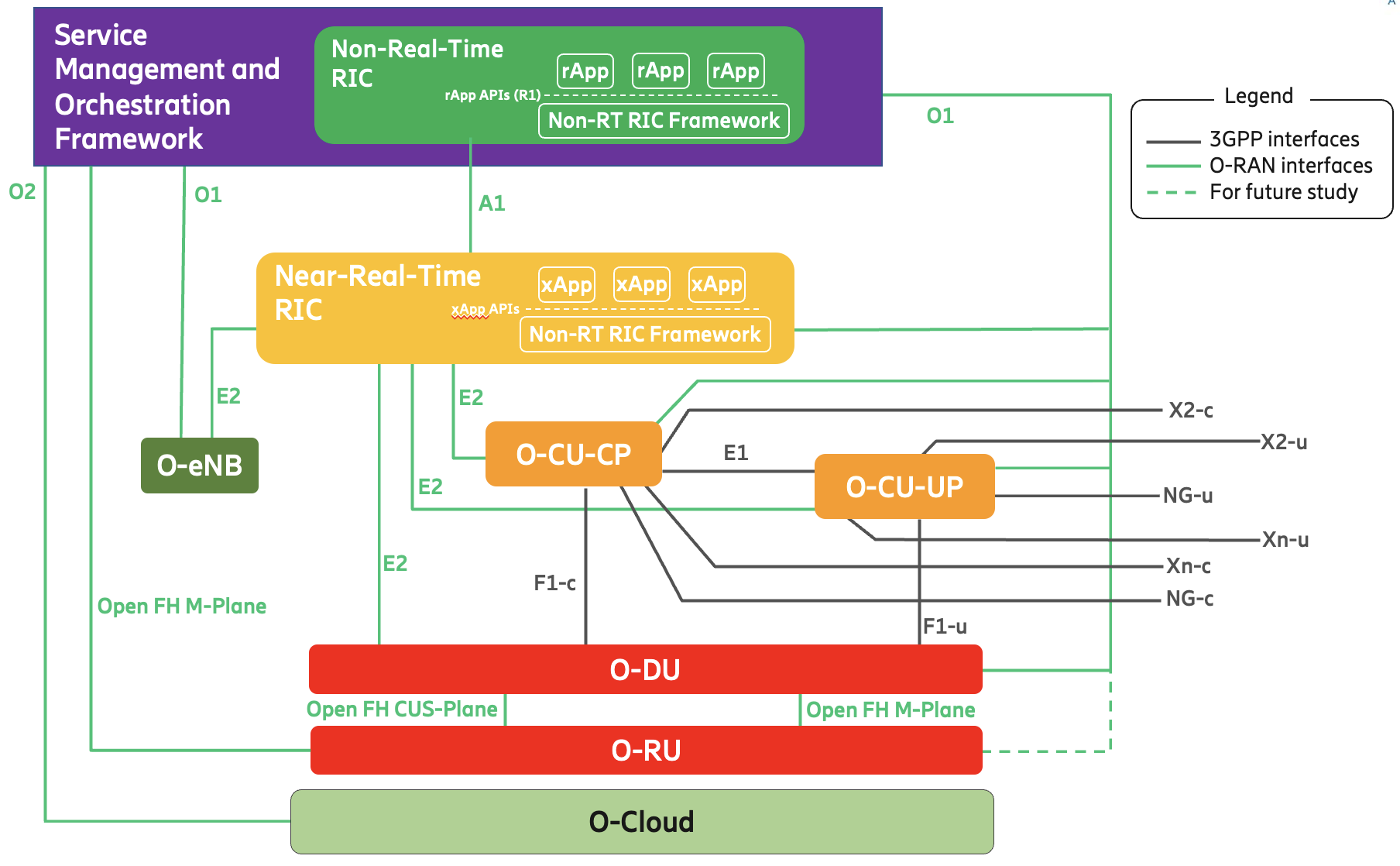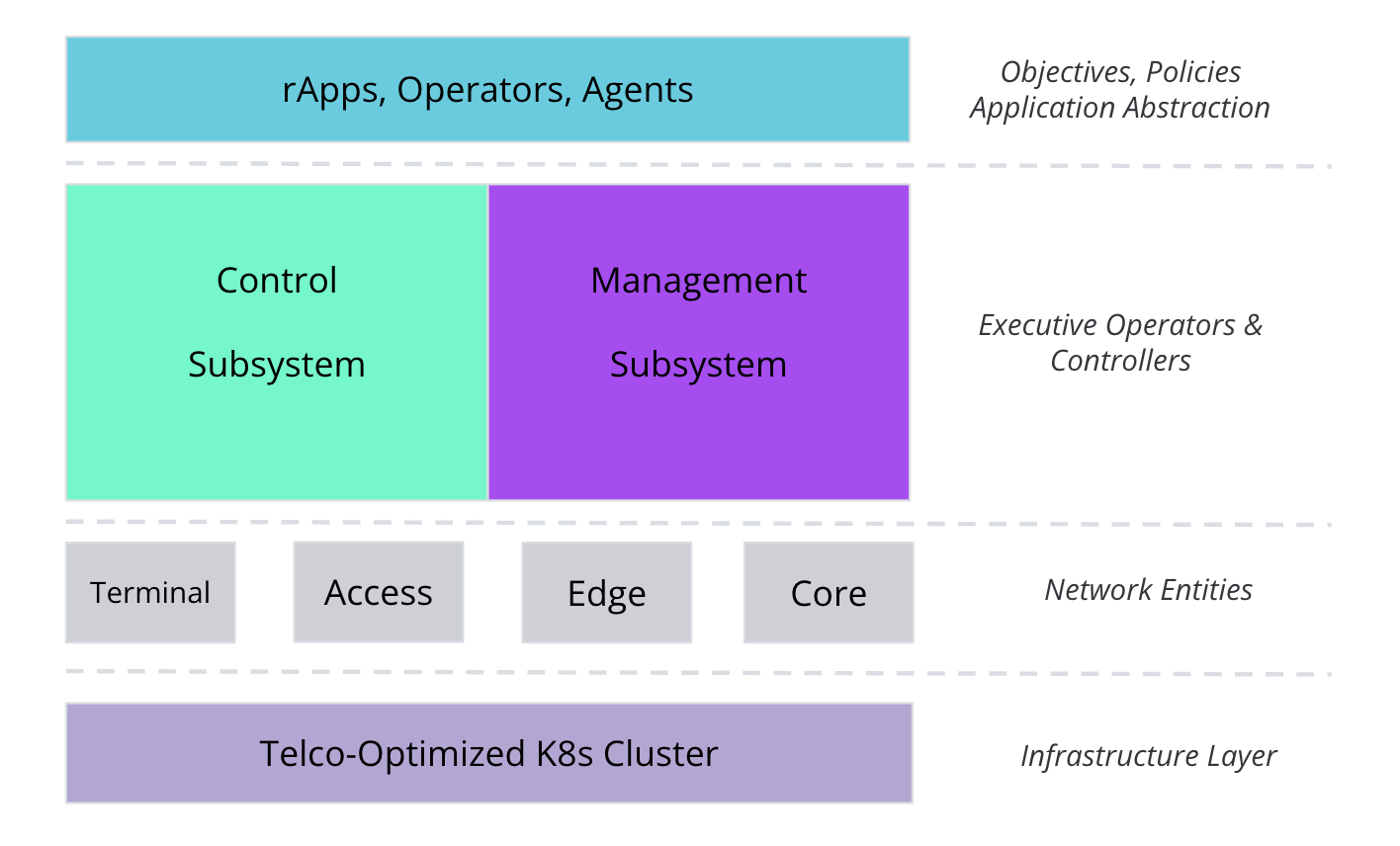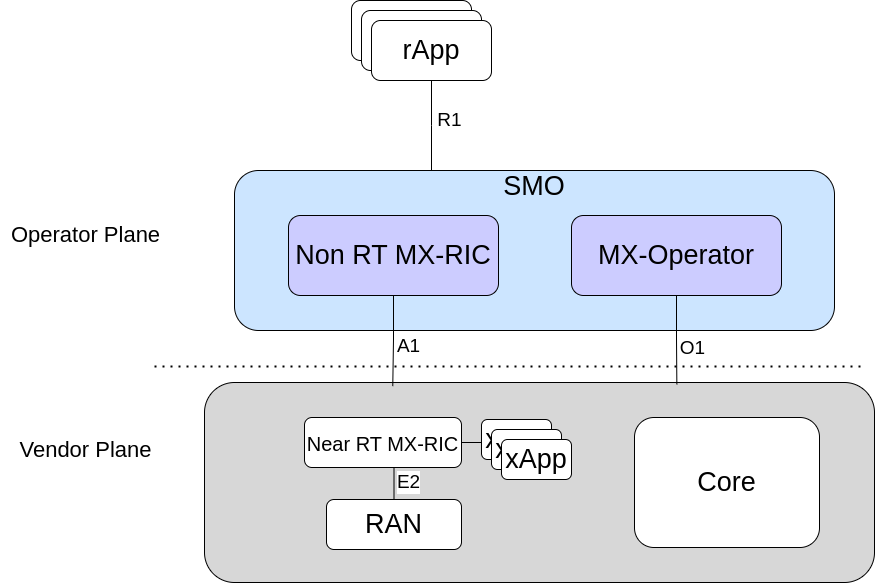Overview
ODIN is BubbleRAN's logical controller responsible for the control of the Network Functions (NFs). In this context, controlling refers to handling NFs as a white-box in an inbound manner. As NFs are considered different in nature, controlling them requires extracting different statistics and forwarding different policies. As a result, ODIN requires to have deep knowledge inside the control logic of NFs, both in the core and access network, to carefully and appropriately re-configure them to meet user requirements.
If we focus specifically on the Radio Access Network (RAN), ODIN aligns with the role of the Non-Real-Time RIC (Non-RT RIC) in the O-RAN architecture.

The Non-RT RIC is a logical function within the Service Management and Orchestration (SMO) layer, responsible for:
- Non-real-time control and optimization of RAN resources
- Managing AI/ML workflows (e.g., training and lifecycle of models)
- Providing policy-based guidance to applications and features in the Near-RT RIC
BubbleRAN Operator Plane

The Operator Plane in BubbleRAN is a cloud-native control and orchestration layer built using the Kubernetes Operator Pattern. It consists of intelligent software components that manage and control network entities by abstracting their complexity, enabling automation, modularity, and scalability.
This architecture separates high-level intent and decision-making (rApps) from low-level execution (xApps and RAN components) through a layered structure.
Core Components
🔹 OAM Component: athena-base-operator
- Implements the foundational Network, Element, and Composition Models
- Enables the full lifecycle management of RAN elements (deploy, monitor, update, delete)
🔹 Non-RT RIC Component: odin-control-manager
- Acts as the control gateway within the operator plane
- Interfaces with rApps via the R1 interface and with xApps through A1
- Handles complex orchestration, policy enforcement, and decision dissemination across the RAN
- Ensures alignment between intent (e.g., SLA) and execution
Architectural Flow

This diagram shows how ODIN integrates with the broader BubbleRAN stack:
- rApps define high-level objectives and communicate with the Non-RT RIC (ODIN) via the R1 interface
- ODIN maps these objectives to appropriate xApps and delivers them via the A1 interface
- The Near-RT RIC (on the vendor plane) orchestrates xApps that directly control the RAN through E2
- The MX-Operator (athena-base-operator) enables OAM capabilities through the O1 interface to configure vendor network elements
- The entire system operates on a Telco-Optimized Kubernetes Cluster, ensuring scalability and resiliency
Key Characteristics
- ✅ Bridges Vendor and Operator Planes — enabling multivendor interoperability
- ✅ Modular & Cloud-Native — leverages Kubernetes-native principles for control and orchestration
- ✅ Centralized Intelligence — powered by MX-RIC and MX-AI for automation and closed-loop control
- ✅ Intent-Driven — rApps focus on what needs to happen, while xApps and ODIN handle how it happens
ODIN within BubbleRAN's Ecosystem
ODIN functions as a Non-RT RIC Orchestrator, providing a central decision-making and orchestration layer in the BubbleRAN architecture. Its primary responsibilities include:
- Coordinating the deployment and lifecycle of rApps and xApps
- Ensuring the appropriate xApps are deployed to fulfill the intent defined by rApps
- Delegating execution responsibilities without executing control actions itself
ODIN does not directly modify RAN parameters or collect RAN measurements; instead, it relies on xApps for these tasks.